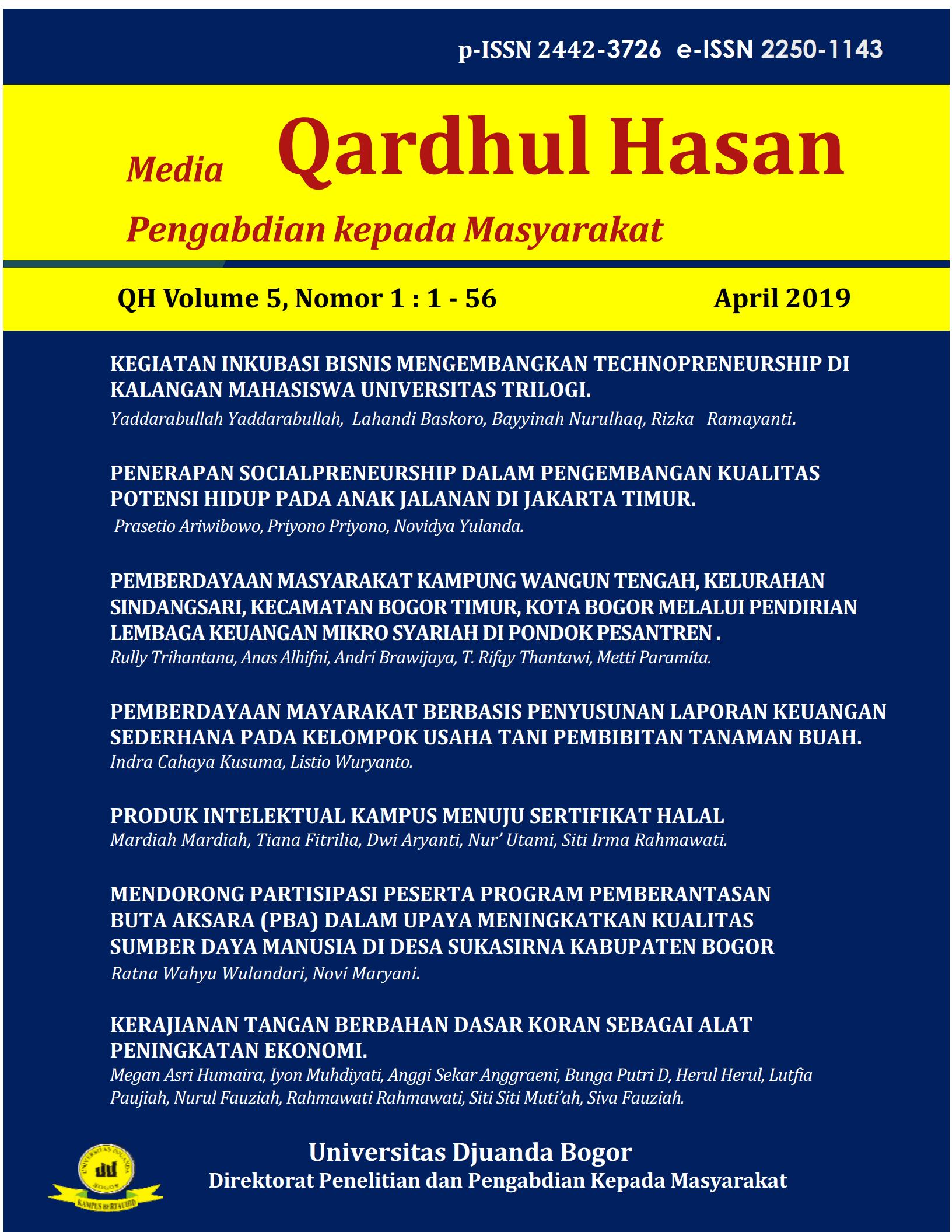HYGIENE AND SANITATION PRACTICES IN ANIMAL QURBAN SLAUGHTER IN FMD OUTBREAK
DOI:
https://doi.org/10.30997/qh.v8i3.6303Keywords:
hygiene, sanitation, qurban, FMD, fasciolosisAbstract
Hygiene and sanitation aspects are important requirement in slaughtering animals qurban at foot and mouth disease (FMD) outbreak situation in Indonesia. This community service aims to provide guarantees to the public that the meat from animals qurban by Djuanda University was ASUH (safe, health, intact, and halal), and doing the assessment for hygiene and sanitation apratices in slaughtering process. Antemortem and postmortem examinations conducted on 19 cows and 2 sheeps. Ante-mortem examination includes examination of general condition, age, body temperature, eyes mucosa, oral mucosa, and signs of disease. Postmortem examination carried on digestive tract organs, heart, lungs, liver, kidneys, spleen, head, and carcass. The application of hygiene and sanitation practices in slaughtering process were assessed with qualitatively assessment, 1 point for fulfilled and 0 for unfulfilled. Total points were summed and presented as a percentage. The results of postmortem examination show a case of fasciolosis in a cow’s liver, and 85% hygiene and sanitation aspects were fullfilled.
References
Abdullah M. 2016. Qurban: Wujud kedekatan seorang hamba dengan tuhannya. Jurnal Pendidikan Agama Islam-Ta’lim, 14(1):109-116.
Apritya D, Yanestria SM, Hermawan IP. 2021. Deteksi kasus Fasciolosis dan Eurytrematosis pada pemeriksaan antemortem dan postmortem hewan qurban saat masa pandemi Covid 19 di Surabaya. Jurnal Ilmiah Fillia Cendekia, 6(1):41-45.
Harada Y, Lekcharoensuk P, Furuta T, Taniguchi T. 2015. Inactivation of foot-and-mouth disease virus by commercially available disinfectants and cleaners. Biocontrol Science, 20(3):205-208.
Jamal SM, Belsham GJ. 2013. Food-and-mouth disease: past, present, and future. Veterinary Research, 44:116.
Kementerian Pertanian RI. 2022. Mengenal penyakit mulut dan kuku (PMK). Diunduh 15-07-2022 dari bbuskp.karantina.pertanian.go.id/wp-content/uploads/2022/06/Infografis-PMK-Full.pdf.
Kim H, Shim I, Baek Y, Han H, Kim P, Choi K. 2013. Investigation of disinfectants for foot-and-mouth disease in the Republic of Korea. Journal of Infection and Public Health, 6(5):331-338.
Kudurugamuwa JL, Shaheen E. 2011. Inactivation of human enterovirus 71 and coxsackie virus A16 and hand, foot, and mouth disease. American Journal of Infection Control, 39(9):788-789.
Sania, Priyanto H, Yulianti. 2020. Sistem informasi lalu lintas ternak (studi kasus dinas pertanian dan peternakan Kayong Utara). Jurnal Sistem dan Teknologi Informasi, 8(1):58-67.
Shirai J. 2012. Disinfection against the outbreaks of foot and mouth disease (FMD). Journal of Disaster Research, 7(3):264-273.
Widiastuti T, Lukman DW, Supratikno, Setiaji G, Dewi S, Juwinto T, Safitri V, Aptriana CD, Herwinarni, Anggaraeni D. 2021. Buku Saku Pelaksanaan Pemotongan Hewan Kurban dalam Masa Pandemi COVID-19. Direktorat Jenderal Peternakan dan Kesehatan Hewan Kementerian Pertanian Republik Indonesia, Jakarta.
Winarsih WH. 2018. Penyakit ternak yang perlu diwaspadai terkait keamanan pangan. Jurnal Litbang Kebijakan, 12(2):208-221.
World Organization Animal Health. 2012. Terresterial Animal Health Code. OIE, Paris.
Downloads
Published
How to Cite
Issue
Section
License
Copyright (c) 2022 Annisa Rahmi, Ristika Handarini, Ahmad Faqih, Dani Mulyana, Desta Dwi Kurniasih, Muhamad Yuri Gagarin, Pirda Parida Permadani Pertiwi, Restu Gumelar, Abdullah Baharun

This work is licensed under a Creative Commons Attribution-ShareAlike 4.0 International License.
- Copyright on articles is retained by the respective author(s), without restrictions. A non-exclusive license is granted to Qardhul Hasan: Media Pengabdian kepada Masyarakat to publish the article and identify itself as its original publisher, along with the commercial right to include the article in a hardcopy issue for sale to libraries and individuals.
- Articles published in Qardhul Hasan: Media Pengabdian kepada Masyarakat are licensed under a Creative Commons Attribution-ShareAlike 4.0 International license. You are free to copy, transform, or redistribute articles for any lawful purpose in any medium, provided you give appropriate credit to the original author(s) and the journal, link to the license, indicate if changes were made, and redistribute any derivative work under the same license.
- By publishing in Qardhul Hasan: Media Pengabdian kepada Masyarakat, authors grant any third party the right to use their article to the extent provided by the Creative Commons Attribution-ShareAlike 4.0 International license.


